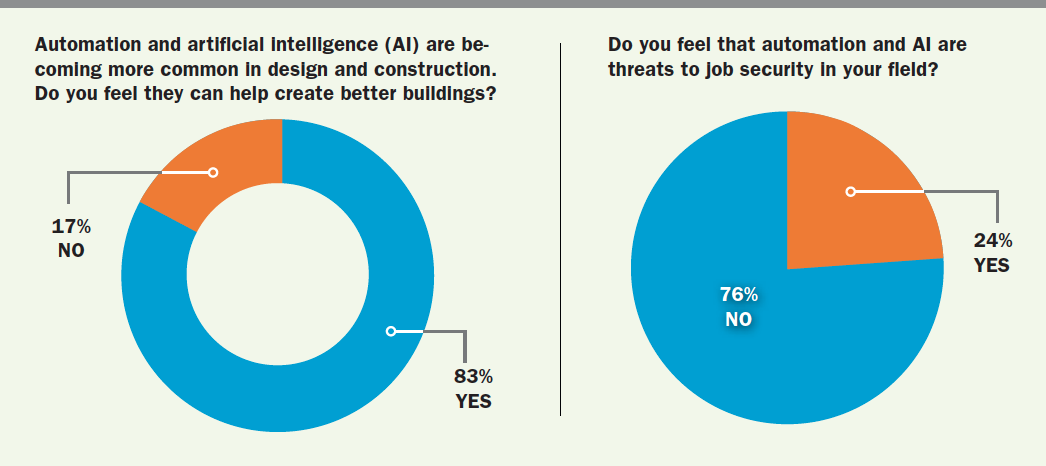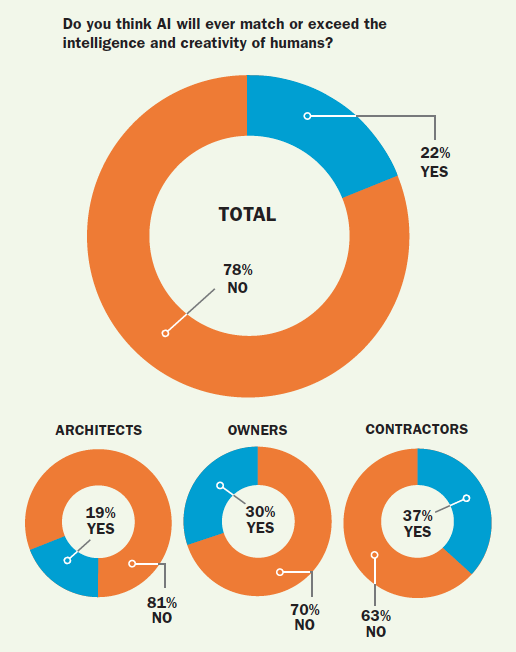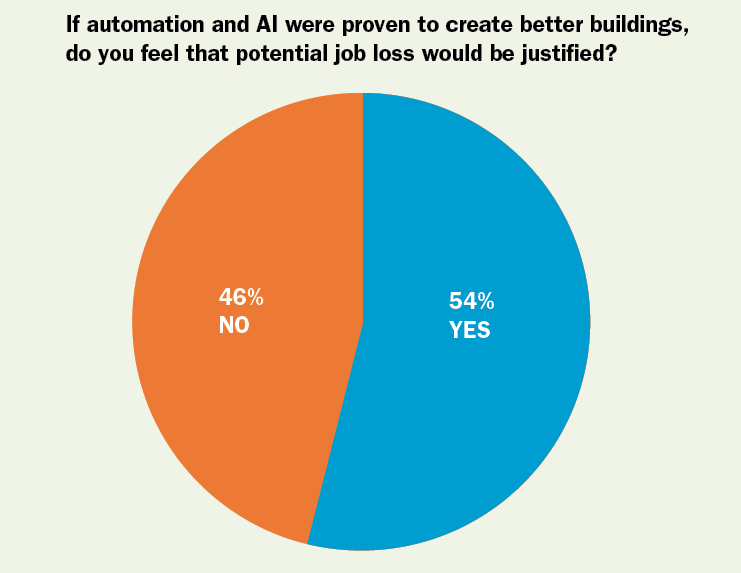In 2013, Chieh Huang and others launched Boxed, an online wholesale retailer that quickly grew to over $100 million in annual sales—largely through automation. Last year, for example, it roboticized its entire fulfillment center in New Jersey. As the new system was being installed, one line worker asked Huang, “Are you still going to need me when that thing goes live?” The company managed to redeploy everyone and not lose a single staffer. “Automation is great for profits,” Huang told Fortune, “but it’s a real potential trouble area for society.”
The numbers back this up. Forbes estimates that automation can improve productivity by 25-38% and save larger companies millions every year. At the same time, according a recent report from the McKinsey Global Institute, a third of the U.S. workforce and 800 million jobs worldwide could be replaced by 2030. Half of all work-related activities today are potentially automatable. At first blush, these stats suggest that automation is good for companies, but bad for jobs. Yet, the McKinsey report quotes a 1960s Federal commission: “Technology destroys jobs, but not work.” Yes, some Boxed employees lost their previous jobs, but no one was out of work. Greater productivity and efficiency can create new opportunities while eliminating others, and these changes signal seismic shifts in every industry.
This column is the first in a monthly series in BD+C that will address how automation and artificial intelligence (AI) will alter the nature of design and construction industry. Over the past couple of decades, computerized processes have significantly aided architects and builders by improving workflow, but to date those processes have not become automated on a large scale. Experiments in automated design and robotic construction remain just that—experiments. But that’s about to change.
A 2013 Oxford University study estimated that onsite construction jobs are 88% likely to be replaced by robots within a decade or two. That’s nearly nine out of every 10 bricklayers, carpenters, and anyone who picks up a hammer or shovel. “There will come a day when no human labor is present on any construction site,” robotics expert A. Scott Howe told me a decade ago.
What about architects and engineers? The Oxford study calculates the probability of eliminating engineers as only 10-13%, while the loss of architects is less than 2% likely. Yet, technology guru Kevin Kelly isn’t so sure. “Robot replacement is just a matter of time,” he wrote in Wired in 2012. “It doesn’t matter if you are a doctor, lawyer, architect, reporter, or even programmer.”
We asked BD+C readers to weigh in, and our recent survey presents a fascinating snapshot of the industry’s excitement and anxiety about technology. The vast majority of respondents have a positive view, with 83% agreeing automation and AI can help create better buildings. Designers and builders vary only slightly, with 81% of designers and 89% of builders agreeing. When asked whether automation threatens job security, only 24% say “yes.” A quarter of contractors see any risk, even though the evidence suggests otherwise.
Over three-quarters (78%) of everyone polled say AI will never match human intelligence, but the variation between designers and contractors is nearly 20 points—81% of designers and 63% of contractors. Meanwhile, AI experts such as Google’s Ray Kurzweil insist that computers will meet or exceed human intelligence by the middle of this century.

The question about which readers seem most ambivalent is whether automation’s ability to create better structures justifies job loss in the industry. A slight majority (54%) answered affirmatively: 52% of designers and 58% of contractors. So designers are almost perfectly divided on this question: they are convinced AI can improve architecture, but they aren’t threatened by this fact, and they are torn about whether the improvements justify fewer jobs.
In the coming months, we will unpack all of this. How will automation advance the built environment, and how will it affect traditional practices and professions? And what are the aims of our industry: to create more opportunity for ourselves or to enhance communities?
Let us know your questions and views. We’re all ears. Contact me at https://lancehosey.com/contact/.
Lance Hosey, FAIA, LEED Fellow, is a Design Director with Gensler. His book, The Shape of Green: Aesthetics, Ecology, and Design, has been an Amazon #1 bestseller in the Sustainability & Green Design category.


Related Stories
BIM and Information Technology | Mar 11, 2024
BIM at LOD400: Why Level of Development 400 matters for design and virtual construction
As construction projects grow more complex, producing a building information model at Level of Development 400 (LOD400) can accelerate schedules, increase savings, and reduce risk, writes Stephen E. Blumenbaum, PE, SE, Walter P Moore's Director of Construction Engineering.
AEC Tech | Mar 9, 2024
9 steps for implementing digital transformation in your AEC business
Regardless of a businesses size and type, digital solutions like workflow automation software, AI-based analytics, and integrations can significantly enhance efficiency, productivity, and competitiveness.
AEC Tech | Feb 28, 2024
How to harness LIDAR and BIM technology for precise building data, equipment needs
By following the Scan to Point Cloud + Point Cloud to BIM process, organizations can leverage the power of LIDAR and BIM technology at the same time. This optimizes the documentation of existing building conditions, functions, and equipment needs as a current condition and as a starting point for future physical plant expansion projects.
AEC Innovators | Feb 28, 2024
How Suffolk Construction identifies ConTech and PropTech startups for investment, adoption
Contractor giant Suffolk Construction has invested in 27 ConTech and PropTech companies since 2019 through its Suffolk Technologies venture capital firm. Parker Mundt, Suffolk Technologies’ Vice President–Platforms, recently spoke with Building Design+Construction about his company’s investment strategy.
AEC Tech | Feb 20, 2024
AI for construction: What kind of tool can artificial intelligence become for AEC teams?
Avoiding the hype and gathering good data are half the battle toward making artificial intelligence tools useful for performing design, operational, and jobsite tasks.
AEC Tech | Feb 20, 2024
ABC releases technology guide for AI in construction
Associated Builders and Contractors has released an artificial intelligence (AI) technology guide for the U.S. construction industry. AI in Construction — What Does It Mean for Our Contractors? outlines definitions, construction use cases, and considerations for the implementation of AI in construction.
AEC Tech | Jan 24, 2024
4 ways AEC firms can benefit from digital transformation
While going digital might seem like a playground solely for industry giants, the truth is that any company can benefit from the power of technology.
Modular Building | Jan 19, 2024
Building with shipping containers not as eco-friendly as it seems
With millions of shipping containers lying empty at ports around the world, it may seem like repurposing them to construct buildings would be a clear environmental winner. The reality of building with shipping containers is complicated, though, and in many cases isn’t a net-positive for the environment, critics charge, according to a report by NPR's Chloe Veltman.
AEC Tech | Jan 8, 2024
What's driving the surge of digital transformation in AEC today?
For centuries, the AEC industry has clung to traditional methods and legacy processes—seated patterns that have bred resistance to change. This has made the adoption of new technologies a slow and hesitant process.
Sustainability | Nov 1, 2023
Researchers create building air leakage detection system using a camera in real time
Researchers at the U.S. Department of Energy’s Oak Ridge National Laboratory have developed a system that uses a camera to detect air leakage from buildings in real time.
















